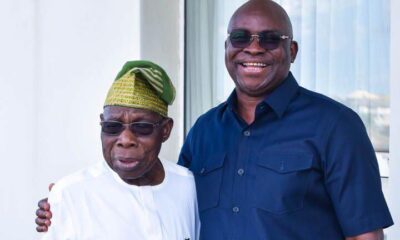Breaking News
Trump Signs Order Extending China Tariff Truce by 90 Days
Since returning to office in January, Trump has imposed a 10-percent “reciprocal” tariff on nearly all trading partners, aimed at addressing what his administration deems unfair trade practices. These tariffs surged to higher levels for several countries, including the European Union, Japan, and South Korea, where duties now stand at 15 percent for many goods. Some countries, such as Syria, face duties as high as 41 percent.

US President Donald Trump has signed an order delaying the reimposition of higher tariffs on Chinese goods, effectively extending the current trade truce between Washington and Beijing for another 90 days. The decision comes just hours before the truce was set to expire on Tuesday.
According to reports from The Wall Street Journal and CNBC, the 90-day extension means the halt on steeper tariffs will continue until early November 2025. However, the White House has yet to release an official statement on the matter.
In May, both the US and China agreed to lower tariffs temporarily, following escalating trade tensions and the imposition of prohibitive triple-digit tariffs. These moves were aimed at reducing the strain on bilateral trade. The temporary truce, which was set to expire on August 13, 2025, had raised concerns that tariffs would resume to even higher levels.
Speaking earlier on Monday, Trump was optimistic about the ongoing trade talks with China, stating: “We’ll see what happens. They’ve been dealing quite nicely. The relationship is very good with President Xi (Jinping) and me.”
Trump also highlighted the revenue generated from tariffs, adding, “We’ve been dealing very nicely with China.”
China’s Foreign Ministry responded positively to the extension, with spokesman Lin Jian saying, “We hope that the US will work with China to follow the important consensus reached during the phone call between the two heads of state.” Lin emphasized that Beijing expects Washington to “strive for positive outcomes on the basis of equality, respect, and mutual benefit.”
Although the full text of Trump’s order has not been released, sources suggest that the new truce will extend into early November, allowing both countries additional time to negotiate.
Shaky Truce and Tensions Ahead
Despite the May agreement, the trade de-escalation has been fragile. In June, economic officials from both nations met in London, where disagreements over the pact surfaced, and US officials accused China of violating the terms. Further talks were held in Stockholm last month, but no resolution has been reached.
US trade envoy Jamieson Greer noted last month that Trump would have the “final call” on any future extensions.
In a social media post on Sunday night, Trump urged China to “quickly quadruple its soybean orders” as part of the trade deal, calling it an important step in balancing the trade relationship with the US.
For now, the US tariffs on Chinese goods remain at 30 percent, while Beijing’s retaliatory tariffs on US products are set at 10 percent. Under the temporary de-escalation, these rates have been preserved, though it remains unclear if they will change in November.
Global Tariff Landscape
Since returning to office in January, Trump has imposed a 10-percent “reciprocal” tariff on nearly all trading partners, aimed at addressing what his administration deems unfair trade practices. These tariffs surged to higher levels for several countries, including the European Union, Japan, and South Korea, where duties now stand at 15 percent for many goods. Some countries, such as Syria, face duties as high as 41 percent.
Exclusions from the “reciprocal” tariff scheme include sectors like steel, aluminum, and those under investigation, such as pharmaceuticals and semiconductors. There has been confusion over whether gold imports would be targeted, following a clarification from US Customs that some gold bars might still face tariffs. Trump clarified on Monday that gold imports would not be subject to additional tariffs, though no further details were provided.
The US president has also singled out countries like Brazil and India for their individual actions. Brazil’s ongoing trial of former President Jair Bolsonaro, accused of planning a coup, and India’s purchase of Russian oil have been particular points of contention. Meanwhile, Canada and Mexico are subject to a different tariff regime.









